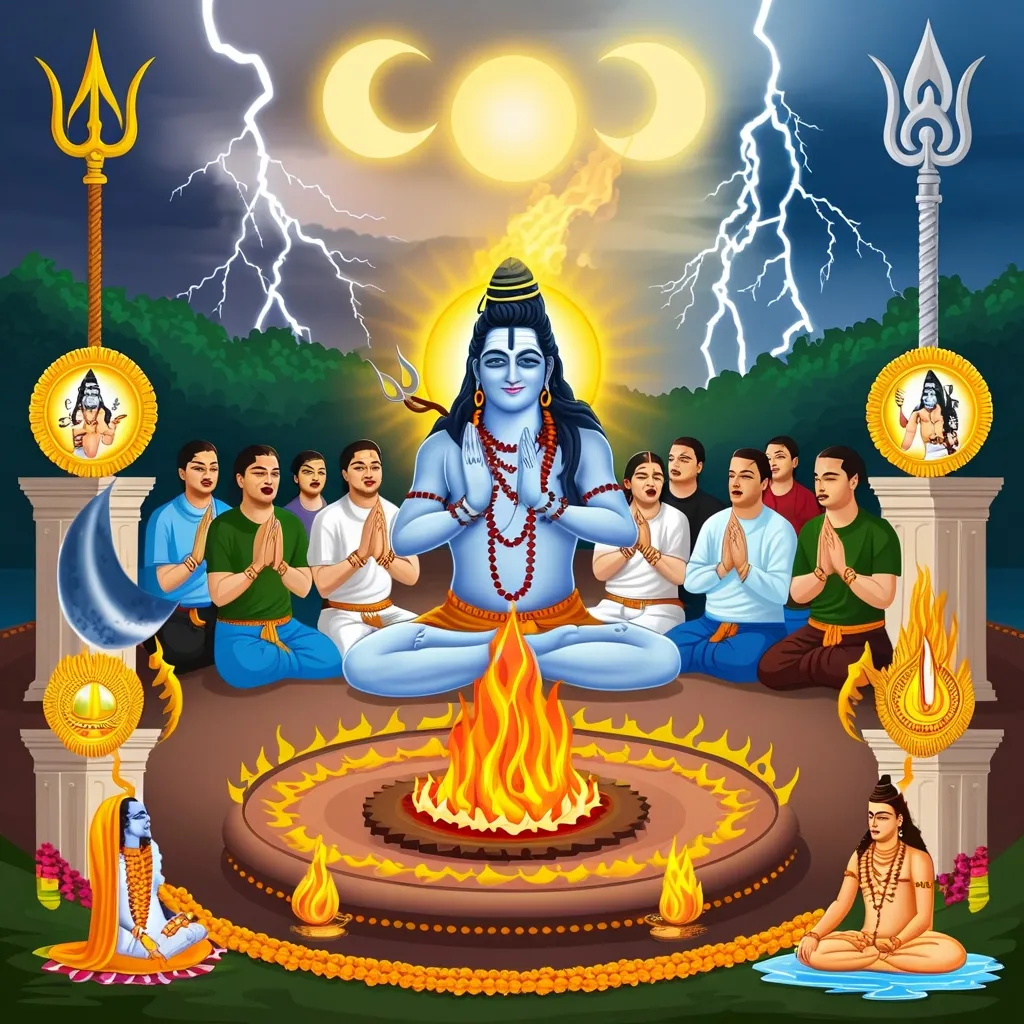In the expansive and intricate world of Hindu scriptures, the Yajur Veda stands tall with its revered segment known as the Rudra Prashna. This hymn, also called Sri Rudram, serves as a deep and powerful homage to Lord Rudra, an aspect of Lord Shiva. It’s woven deeply into the spiritual and ritual fabric of Hinduism, making it a keystone of their devotional practices.
The structure of Rudra Prashna is meticulous. It splits into two distinct sections: Namakam and Chamakam. These segments belong to the Krishna Yajurveda, specifically its fourth chapter in the Taittariya Samhita. The Namakam part is characterized by its repetitive use of the word “Namo,” which means “salutation.” Meanwhile, Chamakam frequently uses “cha me,” translating to “and to me.”
Each of these parts is further sliced into eleven Anuvakas, or sections. These Anuvakas work to invoke various aspects of Lord Rudra, recognizing his multitude of forms and the significant impact he holds over the universe and human life.
Moving on to its importance and benefits, chanting the Rudra Prashna is one of the most sacred and effective rituals in Hindu belief. The benefits are believed to range vastly: from warding off evils and curing diseases to inducing pleasant environmental changes and fulfilling personal aspirations. The hymn is recited during a variety of rituals including Abhisheks (anointing ceremonies) and Havans (fire rituals) by Vedic priests.
Beyond the tangible benefits, there’s profound spiritual significance. It’s not merely about asking for material gains; it’s about connecting with the ultimate reality, equating Lord Shiva with the Universal Brahman. Rudra Prashna embodies the inclusiveness and universality of Hinduism, acknowledging Rudra as the indwelling presence in all forms of divinity and existence.
Chanting Rudra Prashna isn’t just about mouthing words; it’s a solemn and intricate process. Typically, it’s chanted in unison by a group of pundits, creating a soul-stirring and elevative experience. Sometimes, it’s paired with Vedic fire rituals, known as Rudra Yajna, which are believed to amplify its spiritual and material efficacy.
In public gatherings aimed at community welfare, Rudra Prashna is recited multiple times, such as 11, 121, or even 1331 times. This collective chanting is thought to bring about a unified and heightened spiritual experience for all involved.
Scratch the surface of Rudra Prashna, and you’ll find layers of hidden meanings and symbolisms. Beyond its praise and invocation, it’s said to contain coded instructions, for instance, on how to prepare various Ayurvedic medicines. The hymn touches on multiple life aspects—from protection against diseases and adversaries to fulfilling desires and achieving spiritual enlightenment.
Take the first Anuvaka of the Namakam as an example. It’s chanted to destroy sins, attain leadership, receive divine benevolence, and shield against a spectrum of fears and adversities. It acts as a shield against potent fevers and other ailments, showcasing the multifaceted advantages of this sacred hymn.
On a deeper level, Rudra Prashna serves as a philosophical treatise exploring creation, preservation, and destruction. It acknowledges Rudra as the force of destruction, an essential element in life’s cycle, transforming the old into the new. The hymn encourages devotees to recognize Rudra in every facet of existence, from fierce thunderstorms to the serene process of enlightenment.
Chanting Rudra Prashna is believed to purify the devotee of sins, akin to how fire purifies metal. It’s said to grant immortality and liberation from the cycle of birth and death, as referenced in various Upanishads like the Jabala and Kaivalya Upanishads.
For many orthodox Hindu households, reciting Rudra Prashna is a daily ritual often performed during Abhishek ceremonies. This practice is believed to spur spiritual growth and material prosperity, benefitting not just the individual but the entire family and community.
When chanted collectively in public functions, Rudra Prashna fosters a sense of community and shared spiritual experience. It’s a vehicle to invoke Lord Rudra’s blessings for all-around welfare, reinforcing that spiritual practices are not isolated acts but interconnected with the well-being of society.
In essence, Rudra Prashna, or Sri Rudram, remains a cornerstone in Hindu spiritual practice. Its intricate structure, rich symbolism, and deep philosophical implications make it both revered and cherished. Whether chanted alone or in a group, Rudra Prashna continues to be a potent tool for spiritual growth, material well-being, and the journey towards ultimate bliss.






